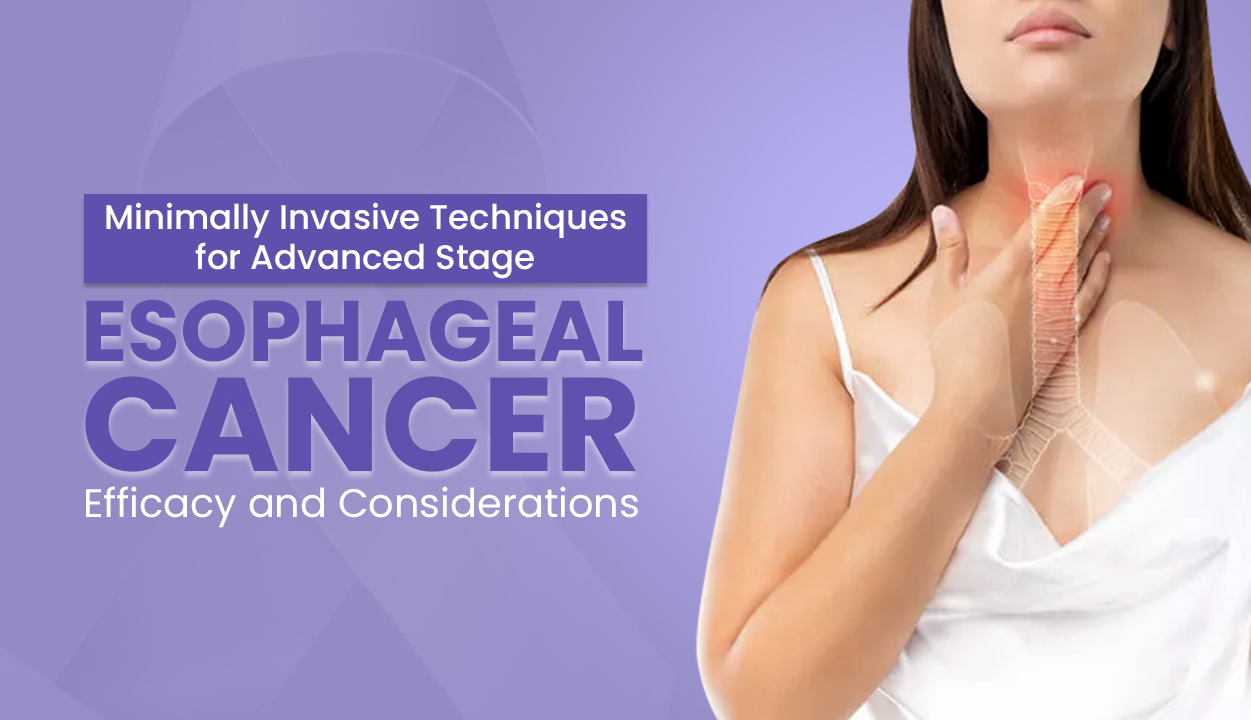
Minimally Invasive Techniques for Advanced Stage Esophageal Cancer: Efficacy and Considerations
Esophageal Cancer is a cancer of the esophagus tube that connects the mouth to the stomach. When it progresses to an advanced stage, cancerous cells spread beyond the esophagus to other organs or tissues. Without timely intervention, patient outcomes can become significantly grim, and survival rates tend to plummet. For many years, the standard approach to Esophageal Cancer treatment has primarily focused on aggressive methods such as extensive surgeries and high-dose chemotherapy. These traditional treatment options often result in various complications and challenges, both physical and emotional, adversely affecting patient outcomes. Therefore, the medical community is continuously striving for more effective and less invasive cancer treatment methods.
Exploring Minimally Invasive Techniques for Advanced Esophageal Cancer
Minimally invasive techniques have diversified the array of treatment options available. The common approaches include endoscopic treatments, laser therapy, laparoscopic surgery, and robotic surgery.
- Endoscopic Treatment: As before, this involves inserting a thin, flexible tube with a camera down the esophagus to identify and treat cancerous lesions. Efficacy is generally more established for early-stage cancers but is under scrutiny for advanced stage cases.
- Laser Therapy: This uses focused beams of light to kill cancer cells. It is mainly beneficial in palliative care, offering significant relief from symptoms in advanced stage cases.
- Laparoscopic Surgery: This is a surgical procedure performed through small incisions rather than one large cut. The efficacy in terms of survival rates is comparable to traditional surgical methods but offers the benefits of a quicker recovery.
- Robotic Surgery: Robotic-assisted surgery enables more precise and controlled movements during surgery. Early evidence suggests favourable outcomes in terms of safety and efficacy. It is increasingly being adopted in esophageal cancer surgery.
Weighing Efficacy and Considerations
- Endoscopic Treatment: Efficacy varies, particularly in advanced stage cases. Patient outcomes can be unpredictable, and survival rates have not significantly improved compared to traditional methods.
- Laser Therapy: While it doesn’t dramatically improve survival rates, its efficacy in symptom relief can markedly improve patient outcomes.
- Laparoscopic Surgery: The efficacy is comparable to traditional methods, but benefits such as quicker recovery time and fewer complications make it an attractive treatment option.
- Robotic Surgery: Early evidence indicates good safety profiles and efficacy, and it offers precise surgical execution, which could positively impact long-term patient outcomes.
Patient Outcomes and Survival Rates
Patient outcomes and survival rates remain the cornerstones for assessing any treatment’s efficacy. All the above-mentioned minimally invasive techniques have shown promise, but definitive data on their impact on patient outcomes and survival rates for advanced stage Esophageal Cancer is still awaited.
The Future of Advanced Stage Esophageal Cancer Treatment
As technology advances, the spectrum of treatment options continues to expand. The effectiveness of these newer, minimally invasive methods, like robotic surgery, is under evaluation. Nonetheless, they offer appealing alternatives to traditional options, with the potential for improved patient outcomes and better survival rates.
Treating Esophageal Cancer in its advanced stages remains a formidable challenge for both patients and healthcare providers. Traditional treatment options have their limitations, which often negatively impact patient outcomes. The emergence of minimally invasive techniques, including the promising field of robotic surgery, offers hope for the future. Ongoing assessment of the effectiveness of these treatment options is critical to achieving the dual goals of better patient outcomes and improved survival rates.
